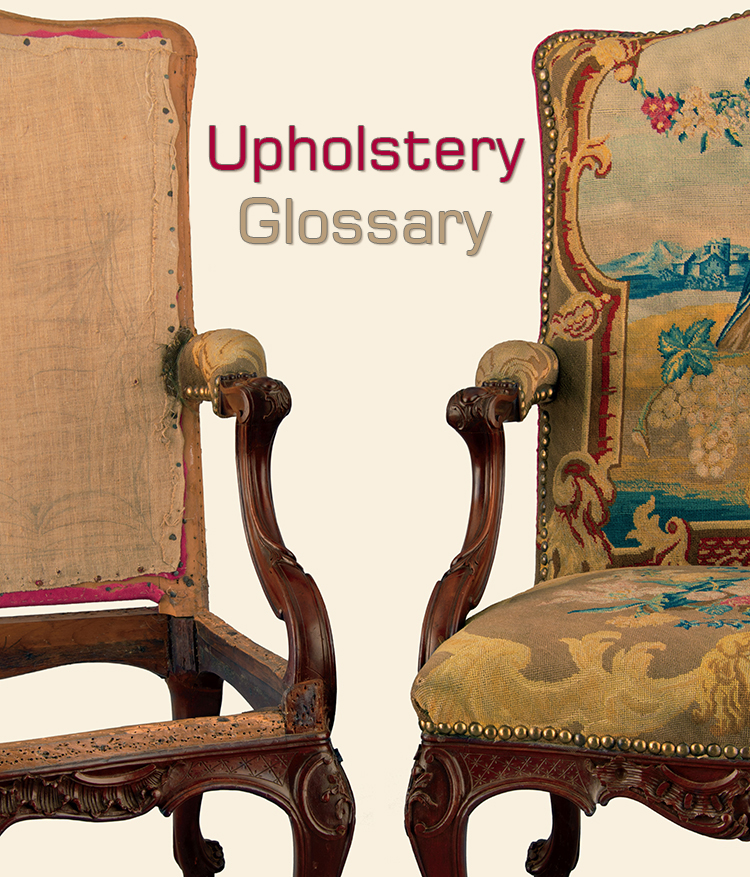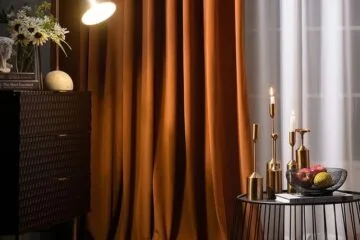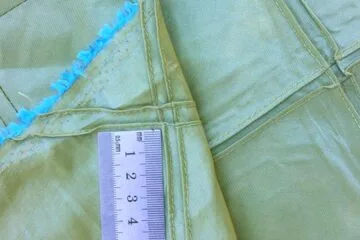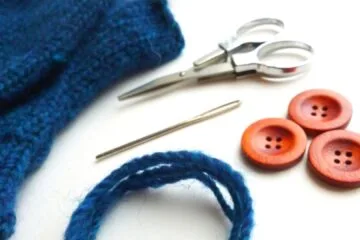Welcome to our Authentic Upholstery Glossary: The terms you need to know about upholstery and upholstery definitions. Here you’ll find some terms used within the trade that make it easier to make the most out of your fabric and get the best outcome with your desired project.
So, let’s jump in and learn about different Upholstery Glossary furniture definitions!
Upholstery Glossary Term for Bias-cut:
Bias-cut means cutting the fabric diagonally from one corner to the other at a 45-degree angle. Bias is mainly the angle at which the warp and weft of a woven fabric intersect. Such a cut imparts more elastic stretch and fluidity to the woven fabric, which gives a particular drape to the outfit.
Colourway:
Any given fabric is available in a specific range of colours or colour combinations. This scope of limited colour variety for each fabric is called its colourway.
Different colours highlight the fabric in other dimensions. The look imparted by one colour differs from another in the same fabric and pattern. So you need to choose colours wisely when choosing upholstery according to your personal needs.
Deck:
In Upholstery Glossary it’s the framed platform under the seat cushion of an upholstered chair or sofa is the deck. The deck of expensive upholstery is commonly covered in plain fabric.
It is made of firm and durable furniture with paddings, webbings, and springs in place. The deck is usually not felt when you seat yourself on the sofa cushion. Unique dust-free fabrics in neutral colours are used for covering the deck nowadays.
Fabric Backing:
The addition of an extra knitted fabric sheet beneath an upholstered fabric in Upholstery Glossary is called fabric backing. This is done to provide additional support to the upholstery fabric to prevent it from sagging or stretching unnecessarily.
Such fabric backing makes the upholstery fabric an “all-purpose” fabric with higher resiliency and stability. It increases the lifespan of fragile upholstery fabrics, for example, chenille. Fabric handling ability is improved with decreased seam slippage.
Gimp:
Gimp is a small, tightly stitched ornamental piece used to conceal areas on upholstered furniture where the fabric meets the wooden frame. Seams, nailheads, tacks are easily hidden by decorative gimp pieces.
In simple terminology, gimp is a small bunched fabric piece of cotton, wool or silk with a wire cord in between to give a finishing edge to high-end upholstery.
Ground-Interlining:
In Upholstery Glossary the ground is the base background colour of any fabric. Interlining is the insertion of a fabric layer between the inner foundation lining and the outer upholstery fabric. The interlining reinforces the original upholstery fabric, improving the fabric’s durability and long-term use. Lightweight upholstery fabrics commonly use this.
Pattern match:
Pieces or units of different fabrics are stitched together to create an even pattern flow throughout the upholstery furniture, in Upholstery Glossary this is called a pattern match. Pattern match needs to be done carefully such that the joining of two fabrics is not very evident.
This requires more fabric material for use. The pattern match is commonly seen in branded and expensive upholstery since it requires expertise and good knowledge of pattern colour matching for a unified look.
Railroading:
Railroading refers to how a pattern or design is woven into the fabric. In conventional patterned fabrics, the pattern direction is vertical, whereas, in railroaded material, the pattern direction is horizontal.
Railroaded fabric comes in use in the case of large and long upholstery like long sofa sets. The advantage of railroaded fabrics is that seams are avoided. Large upholstered pieces can be adorned with ease with such fabric. The pattern runs from one selvage edge to the other selvage edge.
Repeat:
Patterned fabrics commonly have a single unit of pattern design repeated throughout the fabric. The dimension of a pattern depends upon the type of pattern. A single complete unit of pattern is termed a repeat.
The larger the pattern, the more material you require on the upholstery to give a specific look. Large patterns require more yardage on upholstery than a solid colour fabric.
Selvage
Selvage in Upholstery Glossary is the seam edge of a fabric that is tightly woven. It is the self-finished edge of the fabric. This selvage edge has inbuilt finishing to prevent the fabric edge from distortion or fraying and protect the threads in the fabric.
If we want the fabric to drape smoothly, such selvage edges should be cut off when upholstering any furniture piece. Additional finishing such as hem or bias tape is not required for selvage edges.
Tight backup to the roll warp:
Tight backup upholstery refers to upholstery that does not have any cushions. The back or seat of upholstery is self-designed and backed up properly and tightly.
It gives a classy and tailored outlook to the furniture piece and is sturdy, and It does not have loosely attached fabric or cushions. Such upholstery is not very comfortable or springy on seating. Plus, it creates cleaning difficulties. Up to the roll, fabric refers to the pattern running vertically.
Weft:
The weft is also called filling in upholstery. They are the yarns that run horizontally. It inter-laces with the warp to produce the woven fabric. The warp and weft are perpendicular to each other. Warp and weft are two major components in weaving any fabric. In Upholstery Glossary a single unit of the weft thread crossing the warp is called a pick.
Welting:
A cord enclosed by the fabric used to outline the seams of upholstery fabric on furniture is called welting. In Upholstery Glossary Welting is done to outline the edges and define the silhouette of the upholstery. It reinforces the seams.
Smooth welted edges are exclusively seen in high-end upholstery. When the welted edges are made from the main body fabric of the upholstery piece, it is called “Self-Welting”. If the fabric for welting is different from the fabric used in the main body of the upholstery, then it creates a dramatic look that is eye-catching and unique. Patterned fabrics are bias cut for welting.
Nailhead:
A nailhead is a decorative ornament like the head of a nail that is used in upholstery. It is used along the edges to define the curves and valleys in the upholstery piece.
Also, you can easily ignore seams by using nailheads. It is available in a variety of designs and colours. It lends an ornamental border to a solid piece of furniture. Nailheads in gold, silver or brass impart a vintage look.
Buttoning:
Buttoning an upholstery piece gives it a unique touch of embellishment. Buttons can be enclosed with exciting and vibrant patterned fabrics. They can be in float buttons popping out on the upholstery fabric.
Alternatively, you can use the button in recessed areas of the upholstery to uplift the valley look. Studded jewelled buttons are the new trendy fashion in upholstery.
Upholstery Glossary Terms Explained
We hope our Upholstery Glossary helped you understand some industry terms for upholstery furnishings!
For any assistance purchasing fabric or upholstery supplies, please contact us. We are happy to assist you with any enquiries.




